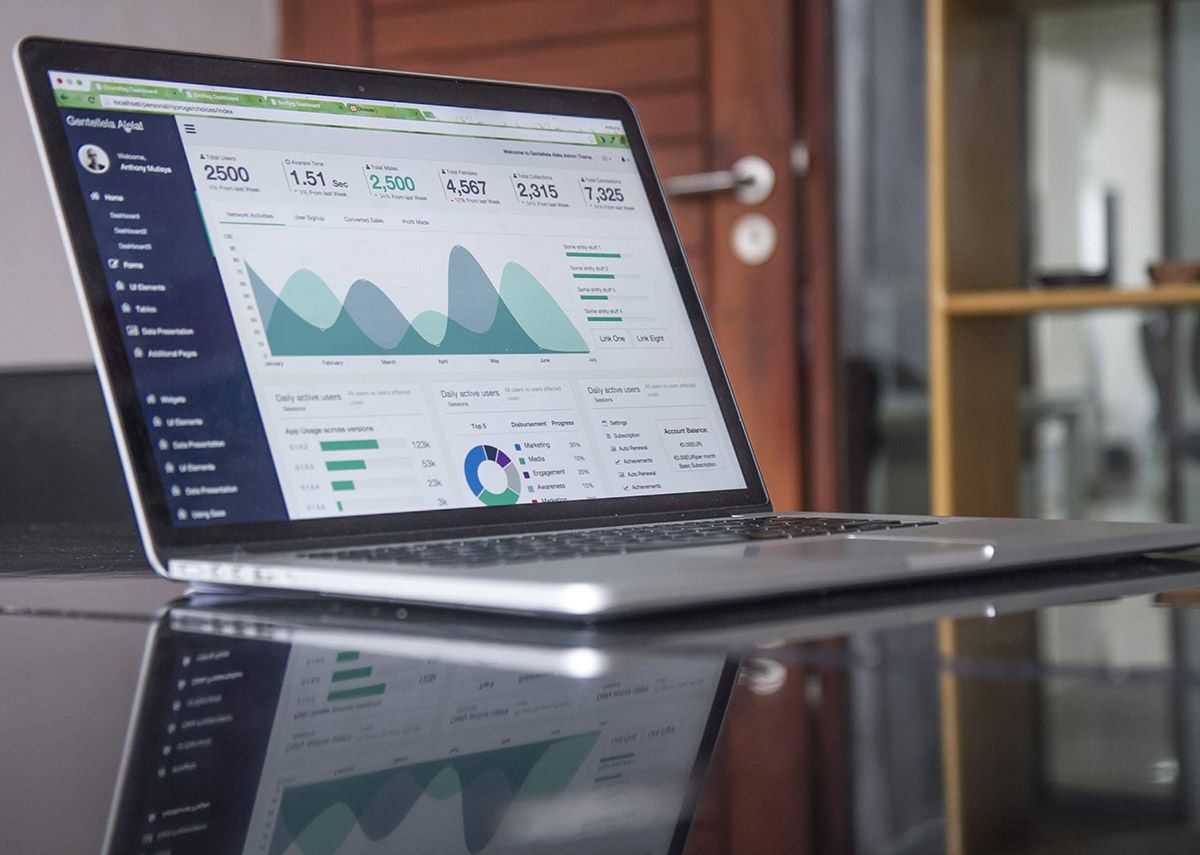WTF Is Business Analytics?
By Alan Hylands

Tired of hearing how data science is the sexiest job of the 21st century? Yeah, me too.
What most of those puff-piece business mag filler articles didn’t point out was that analytics has been used to help manage business performance and strategy for decades.
So relentlessly tuning your AI bot model is great but have you ever gotten deep into predicting what your next quarter sales will look like based on changing market conditions? Getting inside your customers’ heads and knowing what they will do before they even do it?
That’s business analytics at work - right there in the wild.
Sounds like another buzzword. What exactly is Business Analytics?
Let’s try some dry and dusty official definitions of business analytics on for size.
“Business analytics (BA) refers to the skills, technologies, practices for continuous iterative exploration and investigation of past business performance to gain insight and drive business planning.”
“Business analytics (BA) refers to all the methods and techniques that are used by an organization to measure performance. Business analytics are made up of statistical methods that can be applied to a specific project, process or product.”

Gotta love overly stuffy business-speak don’t you?
So what does that really mean?
It means using statistics on data from your business to make your business perform better. From identifying weak points in your existing processes to spotting trends and patterns in the data that help build plans for future strategy decisions.
Sounds a bit like what we call Business Intelligence?
Business Analytics is indeed related to Business Intelligence. Some sources call it a sub-set of BI and I tend to agree.
For me, traditional Business Intelligence is seen very much as backwards-facing. Regular and ad-hoc reporting on what has happened, what is happening now and where it happened in your business.
Business Analytics on the other hand looks more at why things happened and what may happen next in the future.
“BI” reporting will come at you in various forms such as basic queries and reports, dashboards, scorecards and the types of Excel-based pie charts we all know and love. It’s an integral part of bringing a data-informed ethos to your business.
I will not be dumping on the reporting aspect whatsoever as answering the question “how are we doing?” is vital at all times. It’s not the be-all and end-all for Business Intelligence though.
That’s where the Business Analytics section jumps in to bring the big value. Knowing what has happened is great. Knowing what to do next is the real challenge.
“I don’t need numbers to tell me what to do. I’ve been in this industry long enough to trust my gut.”
There has to be a middle ground between handing over the keys to the whole show to a bunch of algorithms and automated AI Skynet-like bots and ignoring all data to go totally down the gut-feel management road.
Subject matter expertise is one of the most overlooked aspects when young analysts look to move into pushing a data-driven agenda.
I prefer the phrase “data-informed” rather than “data-driven”.
It allows the business expertise built up over many years to help guide and augment the analytics outputs and direction of investigation.
Hand in hand, they really do become a power couple for the ages.

So how do we approach Business Analytics in our business?
There are several important elements to a Business Analytics strategy.
Data Collection, Cleansing and Aggregation
Without plenty of good quality (i.e. not absolute dirt) data your efforts will all be for nothing. From your in-house transaction logs data to augmented third party data, it all plays a part and can help fill in the gaps that will help you uncover what’s really happening under the hood of your business.
Get this step wrong though and you might as well write off the rest of your analytics work. Don’t underestimate this point or do so at your peril.
Data Mining
Put your machines to work and let them loose on your vast supply of data. Here we use statistical techniques such as clustering to segment our customer base, classification to bring groups of transaction types together or regression to work out how past performance might indicate future patterns of behaviour.
Text Mining
We can use techniques like Natural Language Processing (NLP) to gauge the sentiment and tone of our free-text data. Sentiment analysis on customer complaints, social media posts and app store reviews is a direct route into dragging value of these rich data sources.
Not everything sits in a nice, clean table in the data warehouse. Don’t waste the real gold hiding in the rivers of mud that are Facebook, Twitter and Instagram.
Forecasting
Just because something happened before doesn’t necessarily mean it’ll happen again. But there is still a hell of a lot of value in anticipating future events based on what your data says has happened in the past.
Energy companies have used forecasting to prepare for surges in demand at the mid-episode break of very popular TV soap operas (caused by viewers putting the kettle on). Ice cream sales at the beach go up in summer months and down in the winter.
I’ve been analysing some local police data on reported crimes this week. There is a clear seasonal bump in the number of crimes associated with anti-social behaviour over the summer months.
Insights like this can help the management prepare their resource plans for these times of increased demand. Remember, it doesn’t have to be a crystal ball to improve your odds of success.
Predictive Models
Forecasting helps us prepare for overall changes in trends. Predictive scoring models help us drill down to an individual customer or component and predict how they will act in future.
Risk-scoring customers who apply for a personal loan from their bank is an obvious example. Customer A has a poor credit record and patchy employment history. Customer B has an exemplary credit history and is a tenured university professor.
Risk modelling would consider Customer B a safer option and Customer A might be turned down altogether or given a higher interest rate to compensate for their riskier profile.
Optimization
When I studied Management as part of my Accounting degree, they were big into case studies about Kanban and Just In Time manufacturing techniques. Optimizing the flow of supplies into the production process at just the right time when they are needed is an art form.
This can apply to white-collar service industries just as much as car manufacturers and logistics companies. Using business analytics we can build models that tell us the optimal stock levels for certain products months in advance of them needing to be ordered. Or a Next Best Action suggestion for cross-selling other products to our existing customers.
Uber’s surge pricing is a good example (for Uber, if not the customer) as it takes demand into account when ramping up price to maximize the transaction value. Even if it’s distinctly unethical in my book.
Data Storytelling
Just like our data collection and cleansing phase, the whole thing is for nothing unless you get your storytelling just right.
- 50 page slide decks with the Encyclopedia Britannica squeezed onto them in tiny 5pt font.
- Pie charts.
- Donut charts.
- You name it, it’s been used (badly) to convey a business story to the people at the top making the decisions.
And in many cases, failing to hit the mark.
Modern data viz tools like Tableau and Power BI give a lot more scope to generate eye catching, interactive, graphical content. But it still comes down to digging through the haystack to find the one needle of data-informed truth that will move the business on in the right way.
The ability to do that is rarer than rocking horse shit so consider it a proper superpower.

Business Analytics sounds like magic. Are there any downsides?
Business + Humans + Computers + Data. See any problem areas there?
In my experience, the biggest issue with getting full value out of your Business Analytics strategy is lack of real buy-in from the senior decision makers. They’ll talk a good game in front of people. They’ll maybe sponsor an analytics project or two.
But the will to really break with decades of past behaviour and let the data inform their own decision making is clearly a mental step too far.
How do we solve this?
Good question. Get senior allies onside as early in the process as possible. In large corporate environments, you are unlikely to get too far without a senior champion on the board or driving the sea-change in attitude that you will need for ultimate success.
In small to medium sized businesses, you need the person who writes the cheques to be the champion. Simple as that.
What about cost - both in investment and people?
You have to be committed to the long haul. By all means, start with a small Proof of Concept project (which is my chosen starting point actually) to build up confidence. But know that over time, this will grow and you need the infrastructure in place to support that over the long term.
That doesn’t mean fire a tonne of money at it, bring in every vendor going and expect overnight results. It means having a key advisor there at the start and at each stage of growth to ensure the roadmap is planned out and being followed.
Keeping that champion in high places happy and on-board is vital as well.
Implement from the ground up and across the business.
Building a successful Business Analytics function in your business means embedding it across the whole of the business. You can’t just have a data nerd sitting in a cupboard somewhere churning out reports and models. If you can’t get the business folk on the frontline to actually use any of it, you may as well not have bothered.
And if it turns into a turf war of ownership between IT and the analytics crew then it’s game over immediately.
It needs buy-in and cross-departmental collaboration to really work and that’s not going to be easy. But my word, it’s worth it if you get the thing right.
Sounds like a lot of hard work. Do we really need to do Business Analytics?
Business Analytics makes your business Harder, Better, Faster, Stronger (in the words of Daft Punk).

If you don’t do it then your competitors will. And even their half-assed implementation might be enough to knock you out of the market.
Do you really want to risk that by sticking to your gut feel/back of a cigarette packet “data” philosophy? Of course not.
Get on the Business Analytics bandwagon now. You won’t regret it.